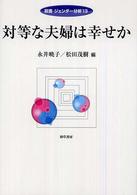Full Description
A trusted guide and companion for current and future art educators, CHILDREN AND THEIR ART presents a professional approach to teaching art consistent with national standards for student learning. This Ninth Edition is targeted at middle level and elementary schools. The authors are experienced as art teachers in the public schools and have a broad knowledge about school art programs. The Ninth Edition provides updated developments in theory, research and practices, with a strong emphasis on how digital technology provides new ways of teaching art.
The most comprehensive textbook available for teaching art education methods, CHILDREN AND THEIR ART covers all aspects of teaching art in the elementary and middle school classroom: the basic principles and goals of art education, the characteristics and needs of children as learners, the core principles of art as a subject--aesthetics, principles of design, art history, new developments in art media and technology. It also covers all aspects of instruction--curriculum planning, sample lessons, suggested readings, and internet resources. Among numerous updates throughout the text, the Ninth Edition features a brand-new chapter on new media in art education with 22 new images. It features the use of digital technology in elementary and middle school classrooms and examples of digital art created by students.
Contents
1. Origins and Rationales for Art Education: Children, Art, and Society.
2. Art Education in Contemporary Classrooms: Influences, Issues, and Practices.
3. Children's Artistic Development: How Children Grow and Learn.
4. Children With Disabilities: Art for All Children.
5. Talented Children: The Nature of Artistic Giftedness.
6. Drawing: At the Heart of the Studio Experience.
7. Painting: At the Heart of the Studio Experience.
8. Sculpture and Ceramics.
9. Printmaking.
10. New Media in Art Education.
11. Design: Art Language and Application.
12. Art Criticism: From Classroom to Museum.
13. Art History: Other Times and Places.
14. Aesthetics: Philosophy in the Art Room.
15. Visual Culture in Art Education.
16. Methods for Teaching Art: Classroom Practice.
17. The Social Dimension: Collaborative Art Activities and Instructional Games.
18. Classroom Organization and Exhibition of Student Work.
19. Curriculum: Background, Planning, and Organization.
20. Assessing Student Learning and Achievement.







